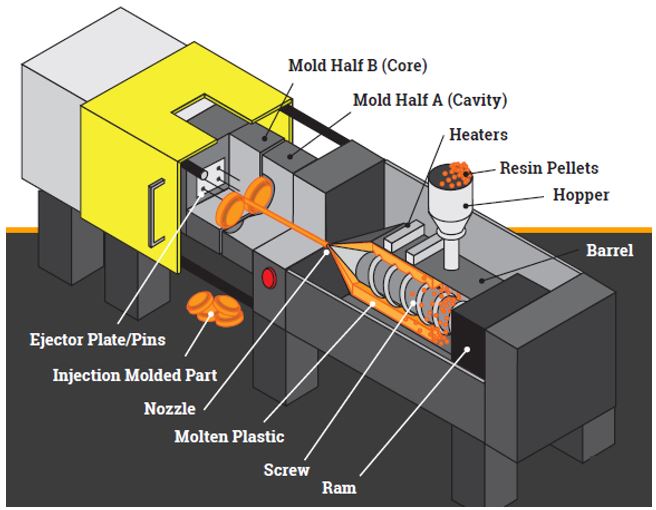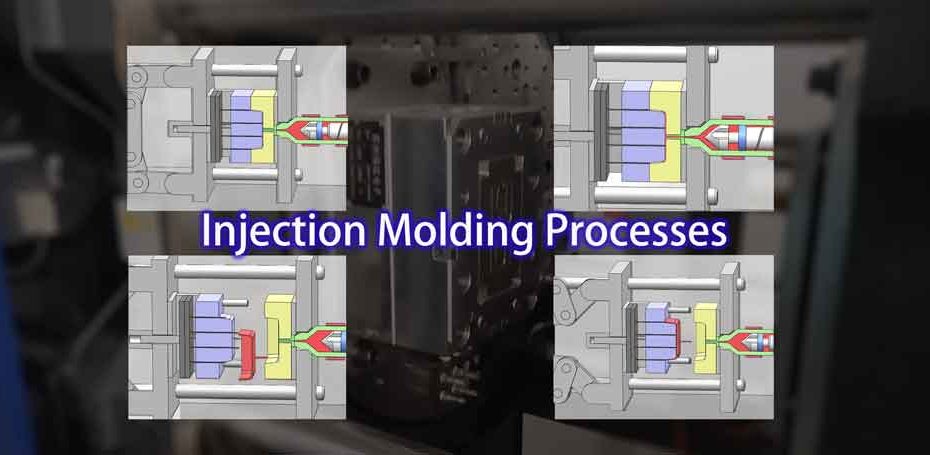Plastic Injection Molding: A Comprehensive Guide to Modern Manufacturing Techniques
Plastic Injection Molding: A Comprehensive Guide to Modern Manufacturing Techniques
Blog Article
Comprehending the Fundamentals of Plastic Shot Molding Processes
Plastic shot molding offers as a cornerstone of contemporary production, offering a methodical approach to producing complex elements with precision. Exploring these vital aspects could disclose how even small adjustments can lead to significant improvements in manufacturing results, raising concerns regarding the potential for innovation in this recognized process.
What Is Plastic Shot Molding?
Plastic injection molding is an extensively utilized production procedure that changes thermoplastic and thermosetting materials into exact and complicated forms. This method is favored for its capability to produce high volumes of identical get rid of remarkable precision, making it an essential approach in different industries, consisting of automotive, customer goods, and medical gadgets.
The process entails melting the selected plastic material and injecting it into a mold and mildew under high pressure. The mold and mildew, designed to the specifications of the wanted component, allows the molten plastic to form as it solidifies and cools. Once the product has set, the mold and mildew is opened, and the ended up element is expelled.
Plastic shot molding provides several advantages, consisting of lowered waste, consistency in manufacturing, and the capacity to include intricate designs that might be testing with various other making approaches. Furthermore, it sustains a broad variety of products, each giving one-of-a-kind homes that can be customized for details applications. As industries remain to introduce, plastic shot molding continues to be at the leading edge, enabling the development of advanced products that fulfill developing customer demands.
The Injection Molding Process
The injection molding process is a sophisticated technique that involves several crucial stages to produce top notch plastic parts. Plastic pellets are fed right into a heated barrel where they are melted right into a thick fluid. This molten plastic is then infused under high stress into a precision-engineered mold, which shapes the material right into the preferred type.
When the mold is filled up, the plastic is enabled to cool and solidify, taking the shape of the mold dental caries. Air conditioning time is vital, as it influences the cycle time and the last buildings of the shaped part. After enough air conditioning, the mold and mildew opens, and the completed element is ejected making use of ejector pins.
Materials Utilized in Injection Molding
Different products can be made use of in the injection molding procedure, each offering special properties that deal with specific applications. One of the most commonly utilized materials include thermoplastics, thermosetting plastics, and elastomers.

Thermosetting plastics, like epoxy and phenolic resins, undertake a chemical change throughout the curing process, causing a click to read rigid, inflexible framework. These materials are ideal for applications needing high warm resistance and architectural stability, commonly utilized in electric insulators and vehicle parts.
Elastomers, consisting of silicone and rubber-based materials, offer flexibility and strength. Their one-of-a-kind properties make them appropriate for applications that demand flexibility, such as seals and gaskets.
Furthermore, specialty materials like bio-based plastics and compounds are acquiring traction for their environmental advantages and enhanced performance qualities, broadening the range of injection molding applications in different sectors. Recognizing the buildings of these materials is crucial for selecting the suitable kind for certain tasks.
Advantages of Shot Molding
Injection molding stands apart as a very reliable manufacturing procedure that supplies numerous benefits for creating intricate parts with precision. Among the most significant advantages is the ability to produce complex designs that would be difficult or tough to accomplish with various other approaches (Plastic Injection Molding). The procedure permits for limited resistances and thorough features, making certain premium components
Additionally, injection molding is recognized for its quick manufacturing capabilities, making it an excellent choice for high-volume production. When the mold and mildew is produced, parts can be created swiftly, decreasing lead times and boosting general productivity. This performance not only lowers manufacturing expenses but additionally supplies an one-upmanship on the market.
The versatility of products utilized in injection molding further improves its appeal. A variety of thermoplastics and thermosetting polymers can be employed, enabling manufacturers to choose materials that ideal satisfy their details demands, consisting of toughness, warm, and flexibility resistance.
Furthermore, the process reduces waste, as excess product can often be reused and reused. This sustainability element adds to a minimized ecological impact, making shot visit the site molding a liable manufacturing option. On the whole, the benefits of shot molding make it a preferred approach for several industries.
Factors Impacting Product High Quality
While numerous factors can affect item high quality in shot molding, comprehending these components is vital for achieving optimal results. Trick elements consist of product choice, processing specifications, and mold design.
Material choice plays a crucial duty, as various polymers exhibit one-of-a-kind properties that impact flowability, toughness, and thermal security. Insufficient material option can cause problems such as bending or insufficient dental filling.
Handling parameters, including temperature level, pressure, and cycle time, should be carefully regulated. Variants in these settings can lead to variances partly dimensions and surface coating. As an example, excessively heats might create degradation of the polymer, while inadequate pressure can cause brief shots.
Mold design is similarly vital, as it determines the circulation of the molten plastic and the cooling procedure. Poorly developed molds might result in uneven air conditioning rates, leading to residual stress and anxieties and dimensional mistakes.

Final Thought
To conclude, plastic shot molding acts as a critical manufacturing process that enables the efficient production of high-grade components. Proficiency of the shot molding procedure, consisting of the understanding of products and the influence of various aspects on product quality, is important for achieving ideal outcomes. The advantages of this method, such as cost-effectiveness and design flexibility, additional underscore its significance throughout several markets, strengthening its standing as a favored choice for high-volume manufacturing.
Plastic shot molding offers as a cornerstone of modern manufacturing, providing a systematic technique to creating complex parts with accuracy.Plastic injection molding offers numerous advantages, including reduced waste, uniformity in production, and the ability to integrate intricate layouts that may be testing with other manufacturing methods (Plastic Injection Molding). As sectors proceed to introduce, plastic injection molding continues to be at the forefront, allowing the advancement of advanced items that meet evolving customer demands
The shot molding process is an innovative method that involves numerous essential phases to produce premium plastic components.In verdict, plastic injection molding serves as a crucial production process that makes it possible for the effective manufacturing of top quality elements.
Report this page